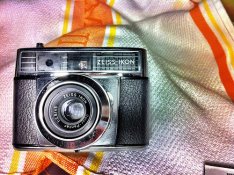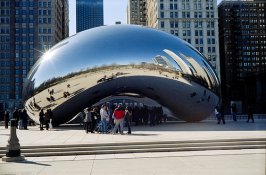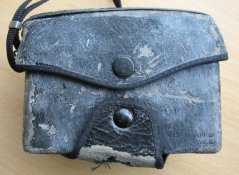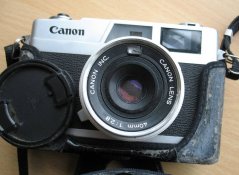Nice review of several compact rangefinder of the past:
http://www.cameraquest.com/com35s.htm
I second the suggestion that it is better to buy a camera in decent condition and have it serviced in any case, rather than trying to look for a camera that doesn't need servicing. Those cameras need servicing in any case, especially the viewfinder can easily become dusty and so "foggy". A cleaning will improve usability considerably. €30 to €50 are well spent money. If you want to save, buy an aesthetically "unpleasing" camera rather than save on CLA (cleaning, adjustement, lubrication) I say.
I own a Canon Canonet QL20, a Voigtländer Vito CLR and a Yashica T3 on which I can comment.
The Canonet has the "faster" lens, has a nice quickload feature (which can be precious in street photography for ease and speed in film change), but I find the rangefinder patch slow to use, the viewfinder in general is a bit small, and the weight can become a problem if you intend to carry the camera in your shirt pocket or in your trouser pocket.
Street photography often requires as you point out zone focusing more than proper calm accurate focusing so the comfortable rangefinder might not be your priority.
The Voigtländer has a good rangefinder and especially has a wonderful viewfinder: very bright, big, lets you concentrate very well on composition like a SLR. Actually better as you can see outside of the framed field.
Besides, the Vito like a Leica has the viewfinder on the left edge of the body, if you use the right eye to compose, you can keep the left eye open and the size of the two images have the same magnification so that, with a bit of habit, you can take pictures while keeping both eyes open and be aware of what is happening around (people, cars going to enter inside the frame). This is the only camera of those three which can be used this way.
Disadvantages: bigger than the Canonet (probably not heavier, though). You have to set the frame counter manually (not a big problem); The in-built light meter might not work properly and not be economically repairable. Doesn't matter, for candid photography in B&W just use the "preset" exposure (with 100 ISO: 1/60 @ f/8 and forget about exposure: shades will be exposed well, subject in the sun will be "overexposed" by 2 stops but very printable in any case).
The Yashica T3 is a modern camera (mine bought 1989). Plastic, autoexposure, autofocus, no compensation, motor winder/rewinder.
Against: not very "fast" lens (a high quality Zeiss 35/2.8 which is not to disappoint for sharpness and flare at all, its worse defect being the vignetting).
Extremely light. Extremely rough. Extremely fast in use.
You also have a tiny but usable vertical viewfinder (waist-level) which is perfect for street shooting.
Wheatherproof.
The autofocus is a 16-step one i.e. serious stuff. The lens, as said, is serious as well. You have an AF confirmation on the viewfinder, and you can "lock" focus and recompose.
The small flash can be very useful though not for your kind of work. It turns on automatically in low light conditions. It is switchable off and it is forceable on for "fill-in".
The worst defect is that the rewinder rewinds automatically after the last frame. That can be noisy in a silent room, a church etc. and is not avoidable. Quick film loading is very fast and reliable though, really the perfect stuff. This camera always takes 38 pictures out of a Fuji slide film.
The other big problem is the lack of exposure compensation. I make do with a hand projecting its shadow over the camera sensor when I need it to open the exposure "for the shadows" and the camera is in the sun.
Hope this helps
Fabrizio
PS Yashica T3 is on a class of its own for the high quality glass, better IMO than the Canonet one or the Voigtländer one, among those three. Beware the Yashica T4 is a different animal with a different lens IIRC. Go for the T3 not the T2 or T4 is my suggestion.








